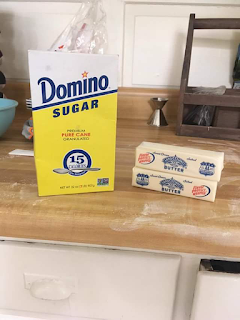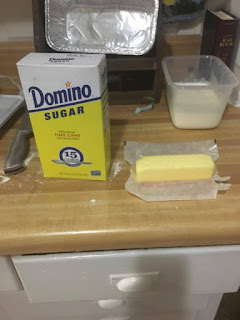White Farmhouse Bread
Video Reflection:
1. Let dough sit to prepare the bread's sponge.

--> --> -->


The bubbles that form in the sponge are indicative of gluten's presence.
2. Mix in some melted butter, salt, and additional flour and you get a blob of dough:


3. Knead your ball of dough until it's less... blobby

4. You'll know you're kneading is on point when you pass the windowpane test:


5. Shape that dough to fit into your pan.
Go from this:

To this:


Then turn and pinch the dough:

6. Afterwards the dough should have doubled in size:

7. Voila:



1. Let dough sit to prepare the bread's sponge.

--> --> -->


The bubbles that form in the sponge are indicative of gluten's presence.
2. Mix in some melted butter, salt, and additional flour and you get a blob of dough:


3. Knead your ball of dough until it's less... blobby

4. You'll know you're kneading is on point when you pass the windowpane test:


5. Shape that dough to fit into your pan.
Go from this:

To this:


Then turn and pinch the dough:

6. Afterwards the dough should have doubled in size:

7. Voila:





Hey Adam, I chose to do the white farmhouse bread too. It looks like your window pane test was a little better than mine so great job on that. Also, great job describing the texture of the bread. Good job and I like your blog!
ReplyDeleteGreat windowpane! I think your loaf pan was a tad small though ;)
ReplyDeleteYou might need a sharper knife to make cutting your bread easier. It is also possible that kneading by hand (without a stand mixer or food processor) might have made it difficult to get a uniform gluten matrix and a tight crumb - this could be why your holes are irregularly shaped.
ReplyDelete